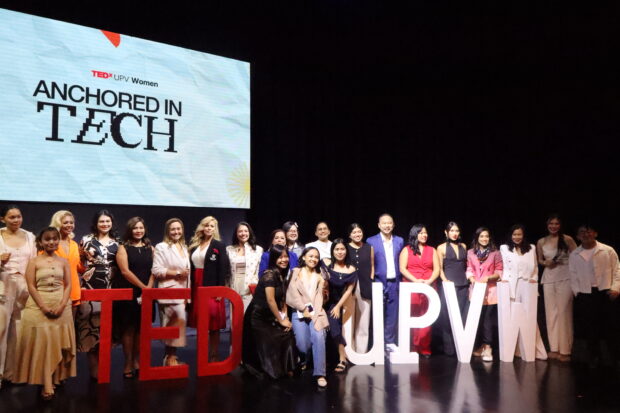In the ’60S, nouvelle cuisine was popularized by a group of French chefs led by the legendary Paul Bocuse. These chefs removed the menu in their restaurants and served only what they cooked that day based on what they bought fresh from the market.
What Paul Bocuse did was not new to me at all. Early in life, I was a palengke kid tasked to carry Lola Genia’s two baskets, one rattan basket for fishes and meats and a pandan bag for vegetable, condiments, beans and dried fish. I watched my lola select the freshest catch from Laguna Lake and the best cut of pork for adobo and beef for kaldereta. She bought from her sukis.
My Inay Aurea liked to buy the day’s menu every day. She wanted to take advantage of the best food available on specific days, mostly the seasonal ones like talangka, pajo and sampalok blooms. When I became a family man, I naturally picked up the habit of getting up early to buy our food from the wet market.
The wet market pulsates with life. It is noisy with loud talk and crowd buzz. It smells of earthy objects, bloody meats, grassy leaves, overripe fruits, fishy fish, people’s hurried breaths and sweaty shirts.
Time for adventure
Pamamalengke for me is always a time for adventure. The action begins at dawn, when goods arrive by the truckload, jeepload and cartload, maneuvered by men carrying the goods with grunts and shouts, their cold sweat dripping under their noses.
The white-tiled countertop displays are ablaze with 150-watt bulbs. The fresh fish are bright silver (bangus bunuan, banak), others pink and red (maya-maya, bisugo). The tuna and blue marlin are huge, borne on the shoulders of cargadores. Ahh, sashimi!
Down the alley’s end, shells and crabs are being sprinkled with water. Prawns look succulent and shrimps are jumping. Steam them and dip in vinegar and garlic!
My imagination is turned on. What shall it be? Seafood paella for lunch? Pesang lapu-lapu for dinner? (Low-salt, low-fat can be palatable.)
Challenge
Every time I go to the wet market, I am faced with the challenge of cooking up a culinary feast. I arrive there with no preconceived menu. I’m like a painter facing an empty canvas, figuring out the composition. What great buy for today will determine the best dish for today? What’s available, what’s fresh, what has quality—that’s the rule.
Charing, my suki, calls me Bosing. She offers me a fleshy tilapia by opening the head and showing the gills—very, very red. “Sariwa, Bosing! Galing sa Taal!”
Charing is cheerfully obese. But what a pretty round face enhanced by mild rouge and a little lipstick. She is loud and funny, but don’t you ever question the freshness of her fish.
At the far end is Aling Rosy the scowl. She has the best crustaceans and she knows it, hence the snootiness.
“Six hundred a kilo for the prawn? You jacked up the price again?” I gasped.
“Bosing! I make very little. Blame the price of gasoline. How the hell will I survive? I have three kids in high school. My husband is only a bus driver.” So goes Rosy’s tired refrain.
Seasonal catch
I also watch out for the seasonal catch to break the monotony. Some of my best irregulars are female talangka from Pampanga, giant lobsters from Mindoro (Wow! It costs P700 apiece. A Chinese man beats me to it) and a four-foot-long freshwater eel from the rivers of Mauban (adobong palos sa gatang may dilaw).
At the meat alleys, red is the color of beef and pork. Pink and white are for the chicken. Here the men rule. My butcher, Mang Basilio, is a fiftyish macho with a big belly and a balding head. He wields a quick and sharp cleaver, chop-chopping the bulalo (Ahhh, that wicked soup!) and slicing the tapa.
Lagring, his wife with languid eyes, handles the cash box. She gives me a pint of pork blood free when I buy meat mix for dinuguan. She fondly calls me suki.
Veggie section
All the veggies are on the side of the meat and fish sections. On the left are the backyard crops from Cavite, Batangas and Bulacan—pechay, mustasa, talbos ng kamote at sayote, puso ng saging, upo and patola. The cheapest and most abundant is kangkong, the poor man’s vegetable.
On the right are the pricey produce from Baguio—lettuce, celery, bell pepper, leeks, spinach, mushrooms and asparagus, all costing as much or sometimes even more than beef tenderloin.
The middleman, yes, he is raking it in, not the poor Igorot farmer.
There’s an organized chaos in my suki’s vegetable store because I can go inside and be picky about my salad greens. So are the other women who jostle me—an Indian (vegetarian!), an Englishwoman (salad-lover) and a Chinese (stir-fry buff).
The Indian woman hoards carrots, potatoes, eggplants and big mounds of sibuyas Bombay and all the red-hot chilis. I can almost taste her spicy Baigan Ketika (Kashmir’s eggplant casserole), which is so addictive with chapati bread!
After an hour, I’m done. My pail and baskets are full and heavy. I call Mang Jean to carry my load to my car. He is a pushcart man, face sooty and neck grimy. His eyes are steely sharp like those of an old stray dog. He has an eerie look, like the fugitive Jean Valjean in “Les Miserables”—dirty, hungry, prowling in the dark underworld sewers of old Paris. I tip him twenty bucks for carrying my heavy buys. He gives me his usual wry smile in return.
Bursting with libido
I must have inherited my love for cooking from my Lolo Simeon. As a five-year-old boy in 1941, I remember watching him cooking by fire meat stews in big palayok, stirring the boiling bubbly dish, scooping gravy to taste it from time to time, adding a little salt or a little pepper until he hit the right taste. Lolo Simeon’s dinuguan, estofado and kinulob were legends.
We men excel in cooking because I think eating is a sensual act. All the kitchens in the great hotels and restaurants in the world are ruled by chefs who are creative, temperamental and bursting with libido.
My grandmother used to hire an all-male group of cooks from the town of Lukban to do fiesta cuisine. They came riding in horses bringing huge tulyasi and sharp bolos of different shapes, plus big wood sangkalan and llanera for leche flan.
A day before the fiesta, they would dress about 30 chickens, butcher two pigs, and chop, cut, pound and peel all the ingredients. On fiesta day, these male cooks would arrange and serve proudly their fiesta cuisine: relleno, embotido, pininya chicken pastel, omelettes, leche flan, and matamis na kaong.
And now for the climax of the day. On the table at lunch, my pesang dalag is served hot, with burong hipon on the side. My son takes the first spoonful, then blurts out, “Sarap naman ng luto mo, Daddy!”
I feel a surge of joy. My wife, too, says my adobo is super! (I heightened the garlic for intensity).
They make my day.
E-mail the author at [email protected]











































